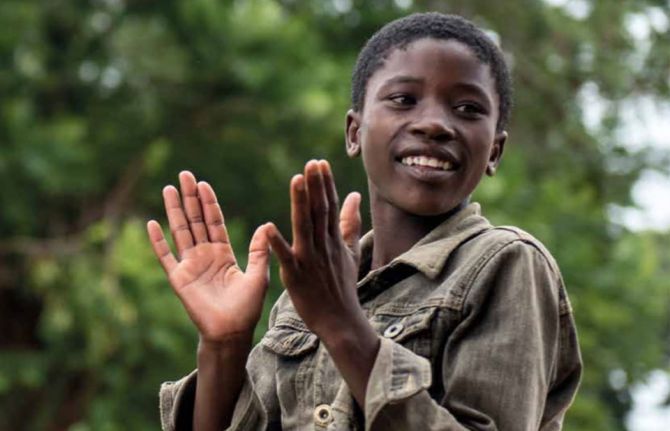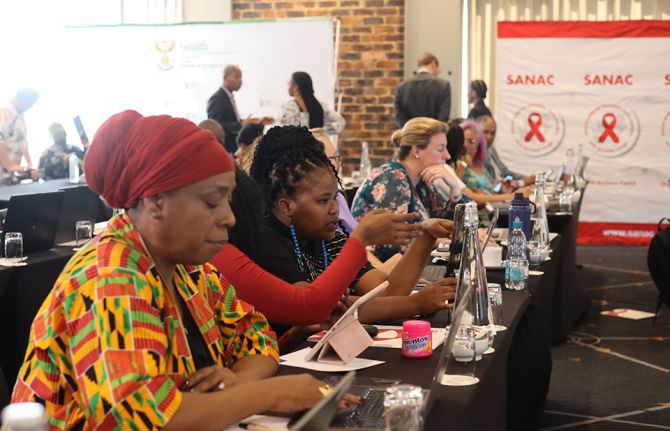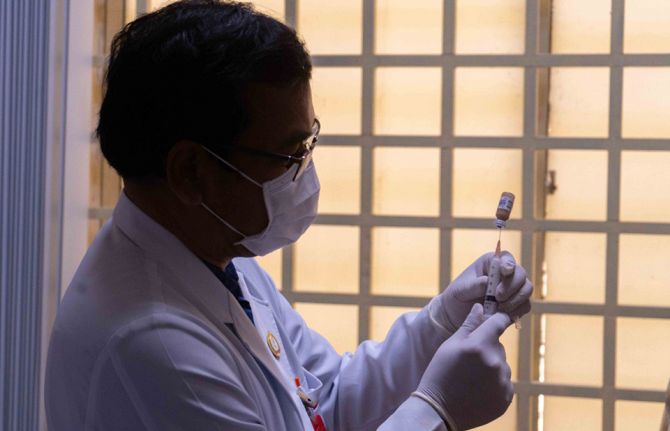

Feature Story
Ending the AIDS epidemic among children, adolescents and young women
27 April 2018
27 April 2018 27 April 2018Ending the AIDS epidemic among children, adolescents and young women requires ambitious targets and a Super-Fast-Track approach. Building on the successes of the Global Plan towards the elimination of new HIV infections among children by 2015 and keeping their mothers alive, UNAIDS, the United States President’s Emergency Plan for AIDS Relief (PEPFAR) and partners* launched Start Free Stay Free AIDS Free in 2016 to provide a framework for the urgent work ahead.
Start Free Stay Free AIDS Free prioritizes action in 23 countries** that account for 87% of new HIV infections among children aged 0–14 years and approximately 87% of all children and adolescents living with HIV globally. In 2016, 2.1 million children were estimated to be living with HIV.
In its first progress report, Start Free Stay Free AIDS Free reflects on the achievements made during the first year of implementation and highlights areas where urgent action is needed.
“The world is on the Fast-Track to eliminating new HIV infections among children and ensuring that their mothers are alive and healthy, but we need to do more to ensure that all children living with HIV have access to treatment immediately,” said Michel Sidibé, Executive Director of UNAIDS.
The report shows that globally in 2016, there were 160 000 new HIV infections among children and that 140 000 occurred in the 23 priority countries. Although there was an overall decline in new HIV infections, the decline was at a much slower rate than in previous years.
The report highlights concerns around new HIV infections among young women and girls. In 2016, around 200 000 adolescents between the ages of 15 and 19 years were newly infected with HIV in the 23 priority countries, 72% of whom were young women.
Most—more than 70%—of all new HIV infections among young people are in sub-Saharan Africa, which also has the fastest growing youth population in the world.
“A high number of new HIV infections among adolescents and a fast-growing population could make for an HIV explosion among young women in Africa,” said Deborah Birx, United States Global AIDS Coordinator and Special Representative for Global Health Diplomacy. “The United States Presidents Emergency Plan for AIDS Relief is driving harder and smarter to prevent HIV infections and ultimately help end AIDS among children, adolescents and young women. Every person deserves the chance to survive, thrive and pursue their dreams.”
Gains seen in access to treatment
The report shows that while important gains have been made in access to antiretroviral therapy for pregnant women living with HIV, much more needs to be done to reach children.
In 2016, around 78% of pregnant women living with HIV had access to antiretroviral therapy in the 23 priority countries.
Start Free targets
Reduce new HIV infections among children to 40 000 by 2018.
Reach and sustain 95% of pregnant women living with HIV with lifelong HIV treatment by 2018.
Stay Free targets
Reduce the number of new HIV infections among adolescents and young women to less than 100 000 by 2020.
Provide voluntary medical male circumcision for HIV prevention to 25 million additional men by 2020 globally, with a focus on young men aged 10–29 years.
AIDS Free targets
Ensure that 1.6 million children (0–14 years) and 1.2 million adolescents (15–19 years) living with HIV have access to antiretroviral therapy by 2018.
The increase in the roll-out and uptake of antiretroviral therapy during pregnancy and throughout breastfeeding is estimated to have averted around 270 000 new HIV infections among children in 2016 alone.
The numbers of children on treatment has also increased, but not on a big enough scale. In 2010, only 17% of children aged 0–14 years had access to treatment. By 2016, that had risen to around 43%, with around 920 000 children accessing antiretroviral therapy. Although this is a marked improvement, access to treatment for children still falls far behind access for adults. In 2016, around 54% of adults living with HIV had access to treatment.
The report cites multiple reasons for the slow growth of access to treatment for children, including poor testing rates. Only nine of the 23 priority countries managed to test and diagnose 50% or more of children who were exposed to HIV in 2016. There are particularly low rates of early infant diagnosis in the first two months of life, when it is most important to test, as HIV-related mortality is at its highest. Without access to testing and treatment, half of all children living with HIV will die before their second birthday.
Ways forward
The report offers a set of important actions countries can take to eliminate new HIV infections among children, to test and diagnose children and young people who may have been exposed to HIV and to ensure that children and young people access HIV prevention, quality medicines and age-appropriate sexual and reproductive education and care and support throughout their lives, free from stigma and discrimination.
Other important actions include accelerating new medicines and diagnostics, promoting community engagement and services, voluntary medical male circumcision, access to information on sexual and reproductive health and access to pre-exposure prophylaxis for young people at a higher risk of HIV.
“The future for children and adolescents depends on actions we take collectively today,” said Mr Sidibé.
The latest estimates, for the end of 2017, will be released in July 2018 and will provide further insight into the progress of Start Free Stay Free AIDS Free.
* United Nations Children’s Fund, World Health Organization and the Elizabeth Glaser Pediatric AIDS Foundation.
**Angola, Botswana, Burundi, Cameroon, Chad, Côte d’Ivoire, Democratic Republic of the Congo, Ethiopia, Ghana, Kenya, Lesotho, Malawi, Mozambique, Namibia, Nigeria, South Africa, Uganda, United Republic of Tanzania, Swaziland, Zambia and Zimbabwe.



